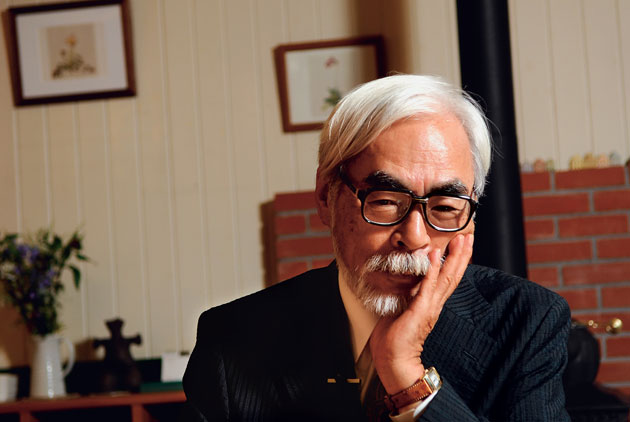雖然各研究領域具有專業的具體要求,但是畢業唯一的通識要求是精通一門外語,修一門數理經濟類課程,一門大一寫作課程。
弗朗西斯雷曼羅布藝術中心[編輯]
Matthew Vassar(馬修·瓦薩)以其關於藝術與教育的關係的名言而聞名於世:「我們應大膽地將藝術應當作一種教育的力量。」瓦薩的藝術藏品可以追溯到建校伊始。當時,他擁有大批哈得遜畫派的畫作,並將它們展出在學院的主樓里。展出的這些作品,被世人稱作瑪古收藏集,至今仍是全國最好的哈德遜畫派畫展之一。弗朗西斯雷曼羅布畫廊展出了馬修·瓦薩先生18000餘藏品中的一部分,畫廊位於學院主樓。
如今,畫廊的藏品類型廣泛,既有古代藝術,又有現代藝術。藏品的創作者既有歐洲的藝術大師,如勃魯蓋爾,多金,畢卡索,巴爾蒂斯,培根,維亞爾,塞尚,布拉克,波納爾,以及20世紀傑出美國畫家的代表:傑克遜•波洛克,艾格尼絲•馬丁,馬克•羅斯科,馬斯登哈特利,喬治亞•奧基夫,查爾斯•席勒和本•莎恩。羅布藝術中心收藏了一些美國最具代表性的紙質藏品。包括倫勃朗著名的版畫「百盾圖」和「三樹圖」,丟勒的畫作,以及戴安阿勃絲和辛迪謝爾曼的攝影作品等。瓦薩學院的學生可以在弗朗西斯雷曼羅布藝術中心擔任聯絡員的工作。這份工作對於資歷沒有特別要求,大一新生就可以申請。
Arts Review | Westchester
Lady Murasaki’s Masterpiece and Its Update
A Review of ‘Genji’s World in Japanese Wood-Block Prints,’ at Vassar College

Paulette and Jack Lantz Collection
“Bird” (1867), by Utagawa Fusatane, from the series “Genji and the Flowers and Birds, Wind and Moon."
By SYLVIANE GOLD
Published: September 27, 2013
Filled with romance, conflict, sex, adventure and the occasional
malevolent visitor from the spirit world, the new print show at the Frances Lehman Loeb Art Center
at Vassar College has so much going on that it would take a book to
cover it. Actually, more than one — and it’s not surprising.

Paulette and Jack Lantz Collection
“The Courtesan Takigawa of the Kukimanjiya Reading Inaka Genji” (1838), by Utagawa Kunisada.
“Genji’s World in Japanese Wood-Block Prints” is essentially about two books: an 11th-century classic of world literature, “The Tale of Genji,”
and its 19th-century parody, “A Rustic Genji by a Fraudulent Murasaki.”
Installed in three galleries at the on-campus museum in Poughkeepsie,
these 57 images are all derived from the Genji stories. But they do more
than illustrate poetic or action-filled moments from a pair of linked
fictions; they do more than delight the eye with a banquet of bold and
subtle color, intricate patterning and superb draftsmanship.
The episodes they recount, so often set amid vistas of piercing natural
beauty, also tell of the refined recreations and aristocratic rituals of
classical Japan. They show the technological change and cultural
ferment that arrived in the 19th century. And with astonishing detail,
they report on fashions in clothing, hairstyles and décor. Then, to keep
things really lively, they give us all this refracted by the theater,
with images of Kabuki actors performing stage versions of the Genji
tales.
The adventures of the handsome, womanizing prince named Genji have endured over the 10 centuries since Lady Murasaki Shikibu,
a lady-in-waiting at the imperial court in Kyoto, first set them down.
Sometimes regarded as the first modern novel, her story is a
foundational work of Japanese culture — if a Western equivalent existed,
it would have to be an amalgam of Homer, Shakespeare and Castiglione, who defined ideal Renaissance manners in his “Book of the Courtier.”
Genji’s moonlit trysts and complicated court intrigues have been
supplying Japanese artists with inspiration and material through the
ages, and the poet Ryutei Tanehiko (1783-1842) tapped into that
tradition in 1829, when he began publishing “A Rustic Genji” as an
illustrated serial — do we dare call it an early manga? His “Nise
Murasaki Inaka Genji” became a runaway success.
His collaborator, Utagawa Kunisada (1786-1865), was already a popular
printmaker, but the Genji wood blocks were a sensation, spawning not
just additional prints but board games and playing cards as well. And
with more than two dozen dazzling images — including the charmingly
self-referential “Courtesan Takigawa of Kukimanjiya Reading Inaka Genji”
— Kunisada dominates this show, along with his follower, Utagawa
Kunisada II (1823-1880), who is represented by more than a dozen works.
“Genji’s World in Japanese Wood-Block Prints” opens with some examples
of earlier illustrations related to the original tale. Then it quickly
plunges us into the strangely time-warped world of the Kunisadas, in
which the “Rustic Genji” hero Mitsuuji, who lives in the 15th century,
follows in the footsteps of his 11th-century counterpart, Prince Genji,
wearing 19th-century styles and gallivanting through a latter-day Japan
that Lady Murasaki wouldn’t recognize.
The most enchanting of these prints show Mitsuuji, usually accompanied
by several beautiful women, simply enjoying himself: boating,
picnicking, sightseeing. He contemplates snow sculptures, flowering
trees and naked ladies diving for abalone.
In “Illustration of a Cool Breeze at Takanawa in Tokyo,” by Toyoharu
Kunichika (1835-1900), Mitsuuji and his female companions go for a ride,
and we see modern Japan taking shape. It is 1870, and sedan chairs have
given way to horse-drawn carriages; bearded, cigar-smoking foreigners
are out and about, one on an early bicycle; and a pair of spanking-new
telegraph poles with the wire strung between them frame the image,
which, like many of the show’s prints, is in triptych format.
Steamships and a suspension bridge are among the other novelties that
show up in Mitsuuji’s travels. But mostly we see him surrounded by more
traditional imagery. In Kunisada’s “Enoshima in Sagami Province,” he
visits an island shrine. A just-released crane carrying a letter sweeps
across two of the three panels in Utagawa Fusatane’s “Bird” as Mitsuuji
looks on. A whole flock takes to the air in Kunisada II’s “Eastern Genji
Amid Pine, Bamboo and Plum,” with Mount Fuji just visible in the
distance.
The show’s labels do a good job of explaining the cultural significance
of the flora, fauna and other symbols that appear with such regularity
in Japanese art.
But visitors won’t need help appreciating the sheer graphic power of
these prints. In one of Kunisada’s most striking triptychs, from 1851,
the drama of a Kabuki scene (acted by Ichikawa Kodanji IV, Kumesaburo
III and Onoe Kikujiro II) is heightened by the slashing diagonals of his
composition and the ominous, blood-red color of the long, unwound sash
that visually links the three characters. It’s clear there will be no
happy ending — except, of course, for us, and for Lady Murasaki, whose
handsome prince shines on.












































 圖片來源:劉國泰
圖片來源:劉國泰